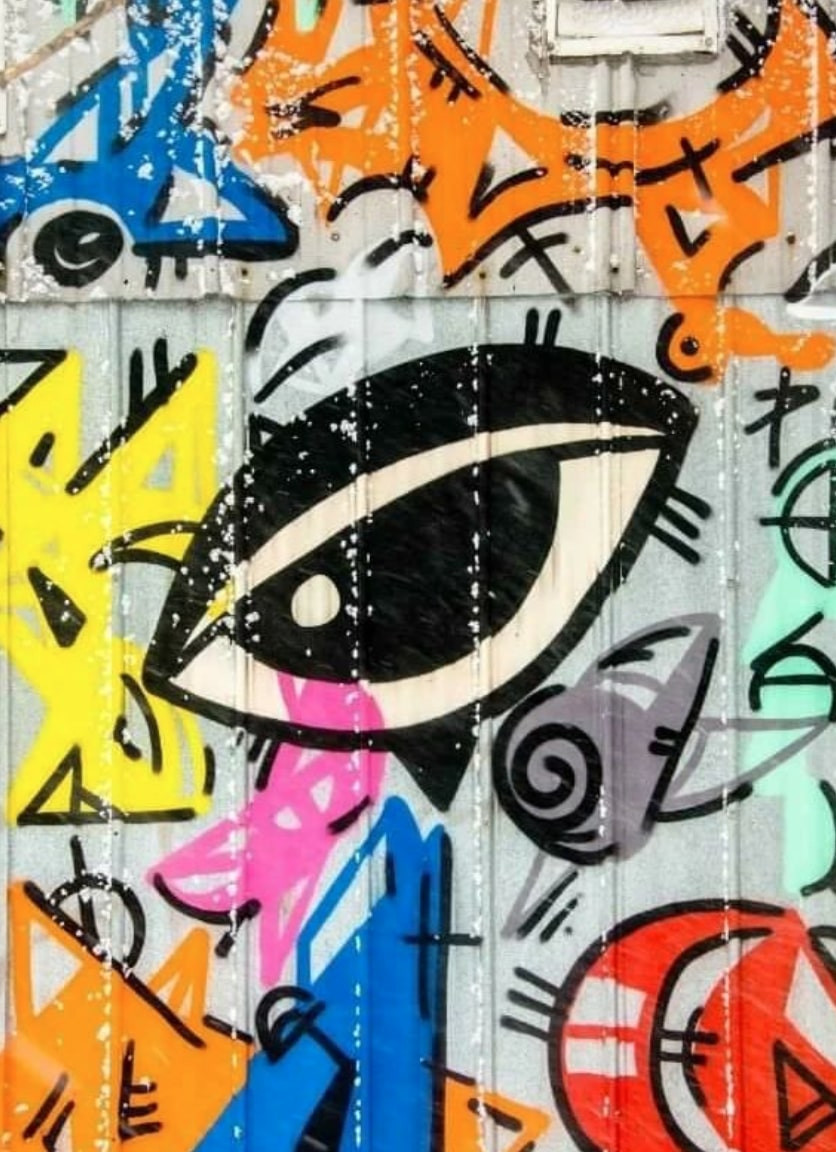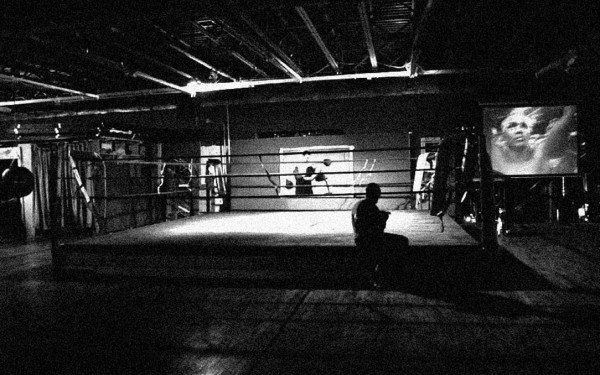Fresh graffiti paint is proof of artistic life in the dead of winter
Despite the cold, Montreal artists express themselves through street art
Even in the winter, vibrant murals, paintings, and posters appear on the city’s monochromatic landscape. The colours are a reminder that artists still create in the cold.
In black coats, thick scarves, and wool tuques, Montrealers walk with their heads down. They protect their faces from icy winds and scan the ground for puddles of salted slush—a mixture that eats away at leather boots.
Before crossing the street, they might look around for oncoming traffic and catch a glimpse of a freshly painted wall. In that brief moment, before lowering their heads once again, they peer into the worlds of street artists.
Montreal is a living canvas onto which artists express themselves, and street art is proof of life in the city.
There is a distinction between graffiti and street artists. Graffiti art is illegal. These artists do not seek permission before they write on city walls. The SPVM fines graffiti artists who fail to receive consent from building owners.
Street art, however, is a legal practice. These writers—a term for graffiti artists—use walls that the city reserves for painting. Community members and building owners often commission street artists to paint in urban spaces.
There are several legal graffiti walls around Montreal. The St-Charles Arena in Pointe-St.-Charles and the de Rouen tunnel in Hochelaga are two places where writers freely experiment with their art.

In Montreal’s winter months, temperatures often drop below -20 C. For this reason, artists like AdidA Fallen Angel choose not to work outdoors in the winter. He finds it is difficult to create something meaningful while simultaneously fighting off the cold. During cold months, he paints on skateboards, works on indoor murals, and creates non-fungible tokens.
He describes his art as “a mixture of typography, geometrical shapes, and soul-loving vibrations, surrounding the concept of universal love.”
Born in Israel, AdidA started as a graffiti artist in 2012. At first, he created art on large sheets of paper and glued them on city walls at night. “I started to get the high that you get from being in the street. From having people taking photos of your art. I got hooked,” he said.
Since 2016, when AdidA permanently settled in Canada, he became a street artist.
In warmer months, he paints in the de Rouen tunnel weekly. Whenever he approaches the tunnel wall, he has no idea what he will create.
“When you see me paint, it looks like I’m dancing—that’s because I am,” said AdidA. “I’m dancing because I’m having fun and because I don’t know what’s going to happen. I can just let go and enjoy myself. By the end, I see something that I never knew I could create.”
Through street art, AdidA learned to create something out of nothing. He also learned to walk away from his art knowing other writers will paint over his work. Over the years, his work has attracted the attention of neighbours who commissioned him to recreate his mural work on canvas.
He also uses the winter to prepare for Montreal’s summer street art festivals. AdidA participates in the annual Canettes de Ruelle and the Under Pressure graffiti festivals. Even though many street artists choose to wait out the cold months, others continue to paint outdoors as much as possible.
Originally from France, street artist ADI came to Montreal to practice his art and to enjoy life. His abstract art is about dedication, hard work, and community building. In nearly all of his pieces, he incorporates his name in creative ways; he alternates between bubble and geometric letters.
“I try not to think too much about my art. I just like to create. It’s more about hard work—paid or unpaid—and the friendships I make along the way,” said ADI. “In my eyes, there is no such thing as pure talent. There is only hard work.”
This belief pushes him to continue painting outdoors, no matter the weather.
Another Montreal-based artist, Boris Biberdzic, creates street art all year round. In his work, he experiments with figurative, abstract, and mid-century modern styles. He also incorporates a lot of geometric shapes and bright colours.

“I really enjoy the physical aspect of being on a bigger canvas and not being constricted, and just throwing paint around and not worrying about being neat,” he said.
Even though Biberdzic wears mittens to protect his hands from the cold, he still tries to work fast to protect his hands from the wind. He likes to paint in the winter because it presents a challenge. When pressed for time, doubt dissipates from his mind, and he can tap into his creativity. Haste also ensures that paint doesn’t freeze in the can. Adrenaline is a component of Biberdzic’s process.
“The process takes off the pressure of creating a perfect piece. So it just becomes a creative outlet, and it enables me to experiment,” he said.
For each piece, Biberdzic is inspired by the physical infrastructure onto which he paints.
“You’re investing in that space, and you’re living in it—something that you wouldn’t have done if you were passing by. So you get to learn what kind of people live in the area,” he said, referring to painting in urban spaces and communities.
Even though he paints outdoors in the winter, Biberdzic has his limitations. “Minus 10C is maybe the lowest I’ll go. Lower than that, it’s just stupid to go out at that point,” he said.
In partnership with MU, a Montreal mural production company, Biberdzic painted indoor murals for schools last winter. MU is a network of Montreal-based street artists dedicated to beautifying the city. The company’s mission is to transform Montreal into an open-air art museum.
Even if their murals erode from harsh winter weather or get covered with layers of paint from fellow artists, these Montrealers find satisfaction in using the city to amplify their voices.
All three artists look forward to the summer months, when the city comes alive with various street art festivals like the MURAL Festival, the Under Pressure Festival, and the Canettes de Ruelles Festival.
This article originally appeared in The Sidewalk Issue, published April 5, 2022.

_750_659_90.jpg)
_600_832_s.png)

__600_375_90_s_c1.jpg)
1_600_375_90_s_c1.jpg)
